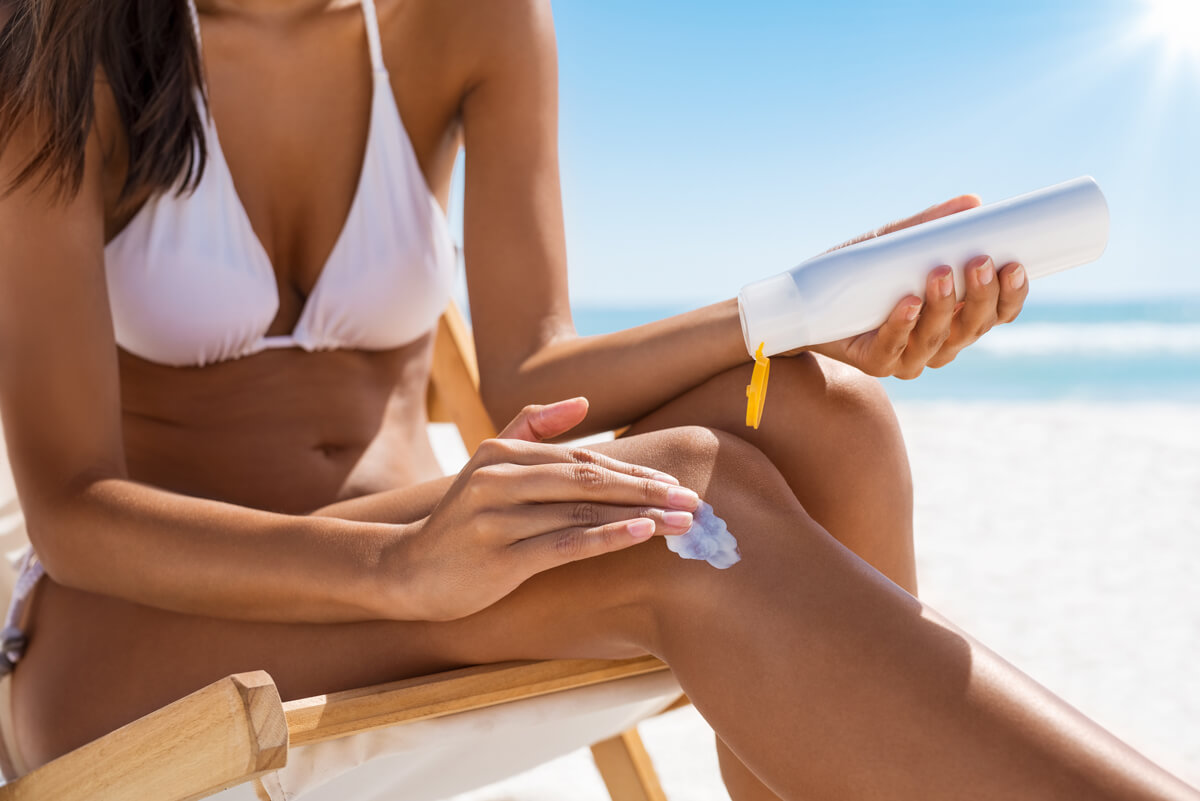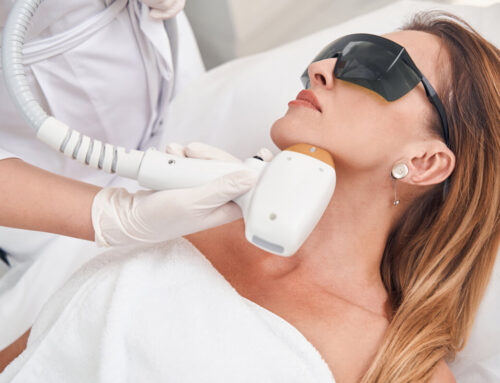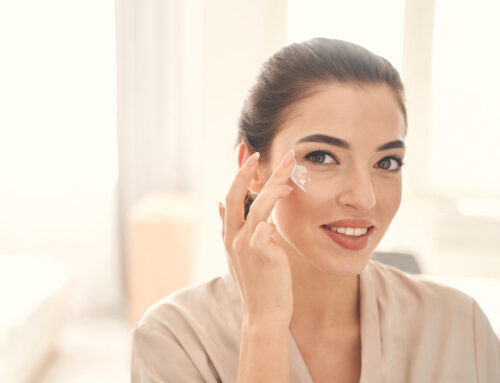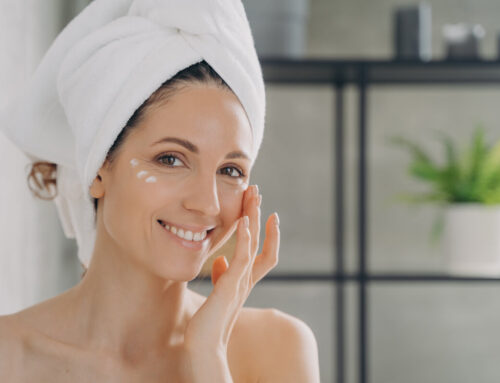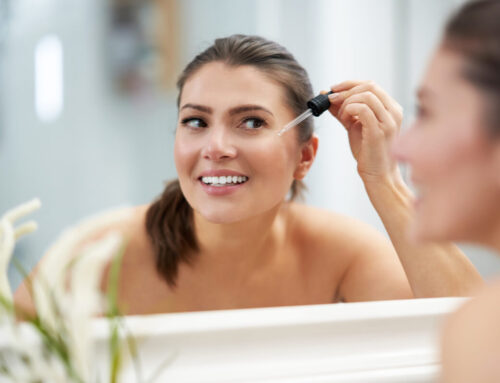What are iron oxides?
Cosmetic pigments called iron oxides are derived from naturally occurring mineral sources. Red, yellow, and black iron oxides can be used to produce various cosmetic products, including foundations, concealers, face powders, lipsticks, and eye shadows. They are frequently employed to give tinted sunscreen formulations their “tint.”
What are the benefits of iron oxide?
Most mineral sunscreens have ingredients including zinc oxide and titanium dioxide that will help with protection from UV radiations including UVA, UVB, and UVC rays. This is because UVA and UVB cause sunburn, while UVC causes early indications of aging (UVC rays are primarily absorbed by the ozone layer and do not reach the skin). However, at Eye Candy Vision and Beauty Clinic, in addition to the UV rays, we would like to emphasize on the importance of protection from the visible light, such as the blue light we see in our daily lives and that can be achieved by using a mineral sunscreen that contains iron oxide that can offer:
- Sun protection: It is a component of mineral sunscreens, which shield the skin from UV radiations.
- Skin protection: It shields the delicate skin around the eyes from ongoing exposure to visible light.
- Fight aging skin symptoms and spots: It keeps skin healthy, lessens the appearance of wrinkles and fine lines, and prevents formation of hyperpigmentation .
As a result, iron oxide is frequently found in mineral sunscreen and other personal care products.
What is iron oxide’s beauty position?
Most physical sunscreens contain zinc oxide and titanium dioxide, which function as physical UV light blockers and can leave a cosmetically undesirable whitish deposit on the skin. Compared to zinc oxide, titanium dioxide has a smaller particle size and a higher refractive index, making it appear whiter on the skin and pores. Since iron oxide’s natural reddish color improves the “white solid” of zinc oxide and titanium dioxide and naturally mixes with skin tones, it has been a popular and preferred component of sunscreens.
How can iron oxides protect us from solar radiation?
Iron oxide can be added to mineral sunscreens to increase absorption and protection against UVA and visible light radiation. Iron oxide is good at absorbing visible light and is often added to topical sunscreens like zinc oxide or titanium dioxide to increase photoprotection. Iron oxide transmits substantially less light than zinc oxide or titanium dioxide alone. Iron oxide and zinc oxide combine to effectively reduce the UVA radiation that reaches the skin to as little as 1.5%.
What are the effects of iron oxide on the skin?
The role of iron oxides is purely functional because they are essential to the formulation process. They have an additional, more skincare-specific advantage, making them one of those compounds that you create additional value for your money.
Iron oxides are used to give specific colors to cosmetic products and have also been demonstrated to provide excellent protection against visible light. Similar to UV rays, visible light can harm the skin and cause some medical conditions, including melasma. According to a study, iron oxide-containing mineral sunscreens formulations are more efficient at preventing sun-induced pigmentation, especially in people with darker skin.
The role of iron oxide in hyperpigmentation issues
Many people suffer from hyperpigmentation problems such as melasma and post-inflammatory hyperpigmentation worldwide. Genetic predisposition, female reproductive hormones, and exposure to UV light are common factors leading to these problems; however, it has also been found that exposure to visible light has a role in the development of melasma.
Current sunscreens could be improved with iron oxides to prevent hyperpigmentation by ultraviolet light. Iron oxide sunscreens are significantly more effective in treating and preventing melasma than traditional UV sunscreens containing titanium dioxide, zinc oxide, or other chemical filters that don’t block visible light.

Do iron oxides harm the skin?
Iron oxide has no identifiable adverse effects on the skin; even people with sensitive skin can tolerate iron oxides. Iron oxide is also a beautiful vegan alternative to various other cosmetic colors that are animal-derived (carmine is one notable example).
Where can I find iron oxide-containing sunscreens?
There are numerous brands of mineral sunscreens with iron oxide available on the market, whereas there are fewer that also contain non-micronized zinc oxide or titanium dioxide. At Eye Candy Vision and Beauty Clinic, Arcadia, we provide quality iron oxide-based sunscreen that protects your skin from ultraviolet and visible light.
Who can use iron oxide-based mineral sunscreen?
It can be used by individuals of all skin types, except those with a known allergy to it.
How safe are iron oxides?
Iron oxides are considered safe in cosmetics and personal care products due to their non-toxic and non-allergenic nature. People with sensitive skin can also tolerate iron. Iron oxides are synthetic substances; however, they are frequently found in products promoted as natural or organic. This is because synthetic iron oxides are safer than natural ones, which often have impurities. For instance, oxides produced in an unmanaged, natural environment frequently contain heavy metal contamination. This further shows that an ingredient is not necessarily safe because it is natural.
Buy your iron-oxide mineral sunscreen from our store today
Kindly visit Eye Candy Vision and Beauty Clinic to get your mineral sunscreen today. We are located in Arcadia and we provide quality iron oxide-based sunscreen that protects your skin from ultraviolet and visible light.
MEDICAL ADVICE DISCLAIMER: All content in this blog and description including: information, opinions, content, references and links is for informational purposes only. The Author does not provide any medical advice on the Site. Accessing, viewing, reading or otherwise using this content does NOT create a physician-patient relationship between you and its’ author. Providing personal or medical information to the Principal author does not create a physician-patient rela-tionship between you and the Principal author or authors. Nothing contained in this blog or it’s description is intended to establish a physician-patient relationship, to replace the services of a trained physician or health care professional, or otherwise to be a substitute for professional medical advice, diagnosis, or treatment. You should consult a licensed physician or appropriately-credentialed health care worker in your community in all matters relating to your health.

